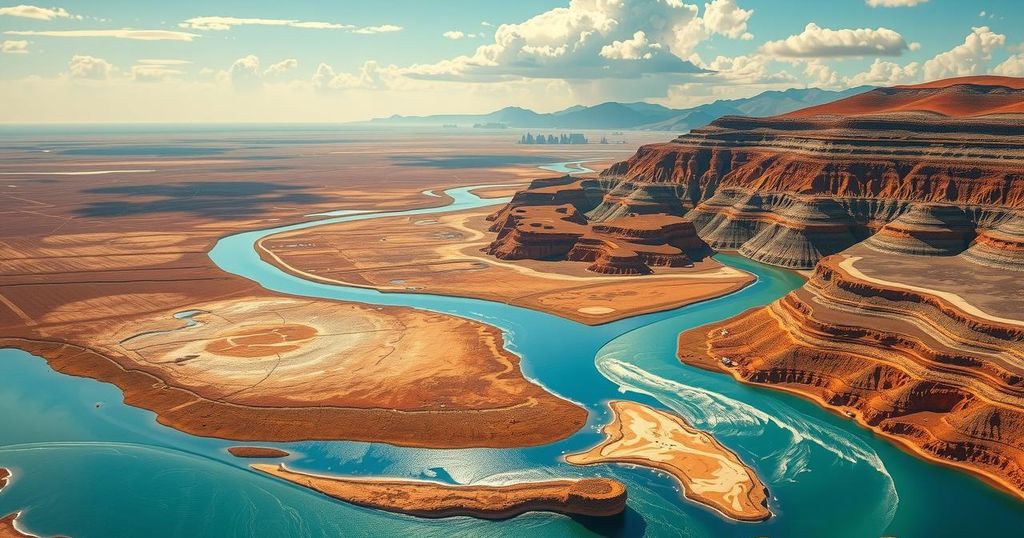Brazil Faces Freshwater Crisis Amid Climate Change and Land Conversion

Brazil is losing significant natural surface water due to climate change and land conversion, according to a recent report. The country lost 400,000 hectares of water surface from 2022 to 2023. Factors include drought, urban development, and aquifer depletion, emphasizing the need for adaptive water management. The situation is alarming, especially in the Amazon and Pantanal regions, as Brazil prepares for the COP30 UN climate conference.
A recent report indicates that Brazil is losing its natural surface water due to the dual challenges of climate change and land conversion, particularly from forest to agricultural use. Despite containing 12 percent of the world’s freshwater reserves, much of which is located in the Amazon, the country lost 400,000 hectares of aquatic surface from 2022 to 2023, approximately the size of Rhode Island, according to the MapBiomas monitoring platform.
Over the past 16 years, 2022 was the only year that exhibited an increase in surface water. Since 1985, Brazil has suffered a loss of approximately 2.4 million hectares of river and lake surfaces, attributed to droughts, urban development, and excessive aquifer extraction. Juliano Schirmbeck, coordinator of the MapBiomas Agua report, remarked, “The dynamics of land occupation and use, along with extreme climate events caused by global warming, are making Brazil drier.”
This alarming trend calls for more adaptive water management strategies and proactive public policies to combat the ongoing loss of freshwater resources. With Brazil set to host the COP30 UN climate conference in November in Belém, the issue is expected to gain prominence on the global stage. Almost two-thirds of Brazil’s surface water is concentrated in the Amazon, a vital ecological region that plays a significant role in regulating climate by absorbing carbon dioxide.
According to the report, last year reflected a significant decrease in the Amazon’s surface water, dropping by 4.5 million hectares compared to 2022—an area equivalent to Denmark. The Pantanal wetlands have also faced severe consequences due to drought and wildfires, with current water surfaces in 2024 being around 61 percent below the average recorded since 1985. Furthermore, while artificial water bodies such as reservoirs and dams have increased by 54 percent since 1985, this expansion has not adequately addressed the decline in natural freshwater ecosystems.
In conclusion, the report highlights the concerning trend of surface water loss in Brazil, primarily driven by climate change and land conversion practices. With urgent calls for adaptive management strategies and public policies, the situation demands immediate attention, particularly as Brazil prepares to host the COP30 UN climate conference. The implications of these findings underscore the critical need to protect Brazil’s invaluable freshwater resources for both ecological integrity and global climate stability.
Original Source: www.ndtv.com







